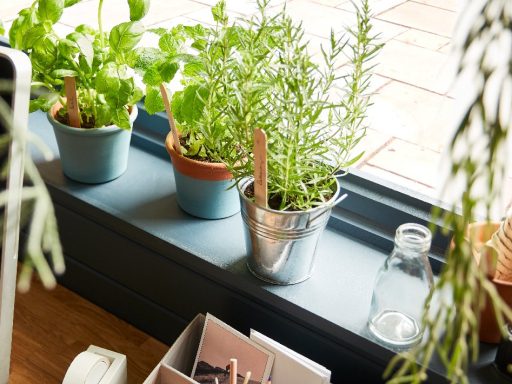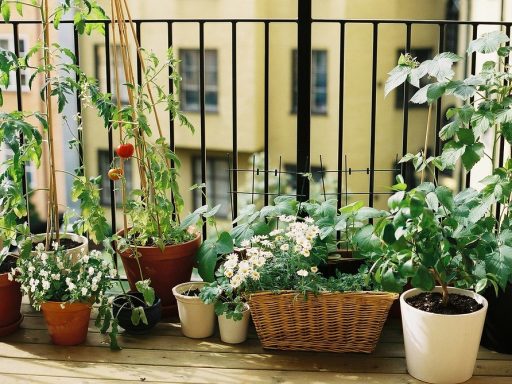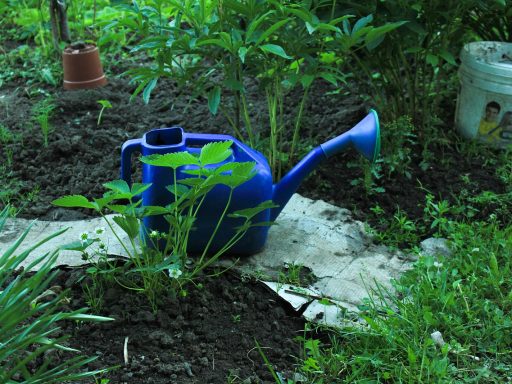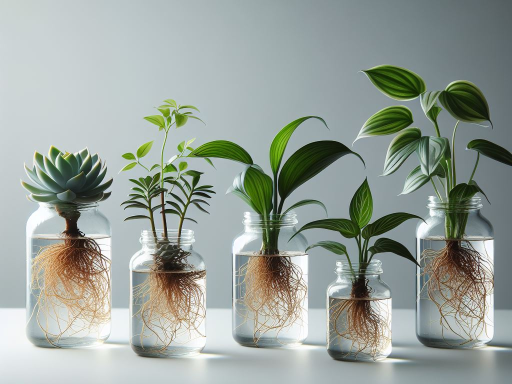Introduction
Welcome to Daphne’s Corner, where we’re here to help you embark on an exciting journey into the world of vegetable gardening! Whether you’re a seasoned green thumb or a complete novice, this comprehensive guide will equip you with the knowledge and tools you need to cultivate a thriving, bountiful garden.

In this article, we’ll cover everything from choosing the right location and preparing your soil, to selecting the perfect vegetables and maintaining your garden throughout the seasons. We’ll also dive into some advanced techniques and share our top tips for maximizing your harvest. So, let’s get started!
Choosing the Right Location
The first and perhaps most crucial step in successful vegetable gardening is selecting the perfect location for your plot. Here are a few key factors to consider:
- Sunlight: Most vegetables thrive in full sun, requiring at least 6-8 hours of direct sunlight per day. Choose a spot that’s not heavily shaded by trees or buildings.
- Soil Quality: Healthy, nutrient-rich soil is the foundation of a productive garden. Aim for an area with well-draining, loamy soil that’s free of compaction and heavy clay.
- Accessibility: Position your garden in a convenient location, close to your home and water source, to make maintenance and harvesting easier.
- Drainage: Ensure the area has good drainage to prevent waterlogging, which can lead to root rot and other problems.
- Existing Vegetation: Avoid areas with aggressive weeds or invasive plants that could compete with your vegetables for resources.
Once you’ve identified the ideal spot, it’s time to start preparing your garden bed.
Preparing Your Garden Bed
- Removing Existing Vegetation: Begin by clearing the area of any existing grass, weeds, or other plants. You can use a spade, hoe, or rototiller to uproot and remove the unwanted vegetation.
- Improving Soil Quality: Next, assess the quality of your soil and make any necessary amendments. Adding organic matter, such as compost or well-rotted manure, can dramatically improve soil structure and nutrient content.
- Tilling and Loosening: Use a rototiller or garden fork to till and loosen the soil to a depth of 8-12 inches. This will help create a hospitable environment for your vegetable roots to thrive.
- Raised Beds: Consider constructing raised garden beds, which can improve drainage, soil quality, and accessibility. Raised beds also allow you to better control the soil composition.
- Pathway Creation: Establish pathways between your garden beds to make it easier to move around and access your plants. These paths can be made of wood chips, gravel, or even stepping stones.
Now that your garden bed is prepared, it’s time to start planning your vegetable selection.
Selecting the Right Vegetables
Choosing the right vegetables for your garden can be a fun and exciting process. Consider factors such as your climate, available growing space, personal preferences, and the time you’re willing to invest in maintenance.
Here are some popular and beginner-friendly vegetable options to consider:
- Tomatoes
- Zucchini
- Cucumbers
- Lettuce
- Carrots
- Radishes
- Beans
- Peppers
- Spinach
- Herbs (such as basil, parsley, and rosemary)
When selecting your vegetables, be mindful of their growth habits and spacing requirements. Some plants, like tomatoes and zucchini, can grow quite large and may need more room, while others, like lettuce and radishes, can be grown in tighter spaces.
Remember to also consider the maturity rates of your chosen vegetables. Some, like radishes, can be harvested in as little as 3-4 weeks, while others, like tomatoes, may take several months to reach full maturity.
Planting and Caring for Your Garden
- Seed Starting (if applicable): Depending on your climate and the vegetables you’ve chosen, you may need to start some seeds indoors before transplanting them to your garden. Follow the specific instructions on your seed packets for proper germination and seedling care.
- Transplanting: When it’s time to move your seedlings outdoors, be gentle and handle the roots carefully to avoid damaging the plants. Transplant them on a cloudy day or in the evening to minimize stress.
- Spacing and Depth: Refer to the planting instructions on your seed packets or plant tags to ensure you’re spacing your vegetables properly and planting them at the correct depth.
- Watering: Consistent and adequate watering is crucial for the health and growth of your vegetables. Aim to water your garden in the morning or evening, and avoid getting the leaves wet to prevent fungal diseases.
- Mulching: Apply a 2-4 inch layer of organic mulch, such as wood chips or straw, around your plants. This will help retain moisture, suppress weeds, and moderate soil temperatures.
- Weeding: Stay on top of weeding to prevent your vegetables from competing for essential nutrients and water. Hand-pull weeds or use a hoe to keep your garden beds tidy.
- Fertilizing: Supplement your soil with a balanced, organic fertilizer to ensure your vegetables have the nutrients they need to thrive.
- Pest and Disease Management: Keep an eye out for common garden pests and diseases, and address any issues promptly to protect your plants.
- Harvesting: Regularly check your vegetables for signs of maturity, and harvest them at the optimal time for maximum flavor and nutrition.
Comparison Tables
To help you make informed decisions about your vegetable garden, we’ve compiled the following comparison tables:
Vegetable Sunlight Requirements
| Vegetable | Sun Exposure |
|---|---|
| Tomatoes | Full Sun |
| Zucchini | Full Sun |
| Cucumbers | Full Sun |
| Lettuce | Partial Shade |
| Carrots | Full Sun |
| Radishes | Full Sun |
| Beans | Full Sun |
| Peppers | Full Sun |
| Spinach | Partial Shade |
| Herbs | Partial Shade to Full Sun |
Vegetable Maturity Rates
| Vegetable | Time to Maturity |
|---|---|
| Radishes | 3-4 weeks |
| Lettuce | 4-6 weeks |
| Spinach | 4-6 weeks |
| Beans | 6-8 weeks |
| Carrots | 10-12 weeks |
| Cucumbers | 8-12 weeks |
| Peppers | 12-16 weeks |
| Tomatoes | 12-16 weeks |
| Zucchini | 8-12 weeks |
| Herbs | 4-12 weeks |
Vegetable Spacing Requirements
| Vegetable | Spacing Between Plants |
|---|---|
| Tomatoes | 18-24 inches |
| Zucchini | 36-48 inches |
| Cucumbers | 12-24 inches |
| Lettuce | 6-12 inches |
| Carrots | 1-2 inches |
| Radishes | 1-2 inches |
| Beans | 4-6 inches |
| Peppers | 12-18 inches |
| Spinach | 6-12 inches |
| Herbs | 6-24 inches |
Frequently Asked Questions
How much space do I need for a vegetable garden?
The amount of space you need for a vegetable garden can vary greatly depending on the size of your plot, the vegetables you choose to grow, and your gardening goals. As a general rule, a 10×10 foot (100 square feet) plot can provide a good starting point for a beginner gardener.
When is the best time to start a vegetable garden?
The best time to start a vegetable garden depends on your local climate and the specific vegetables you plan to grow. In many temperate regions, the optimal time to begin planning and preparing your garden is in early spring, allowing you to take advantage of the milder weather and longer daylight hours.
How often should I water my vegetable garden?
The watering needs of your vegetable garden can vary depending on factors such as climate, soil type, and stage of plant growth. As a general rule, aim to water your garden deeply, about 1-2 inches per week, either through rainfall or manual watering. Adjust your watering schedule as needed to maintain consistently moist (but not waterlogged) soil.
What are the best vegetables for beginners to grow?
Some of the best vegetables for beginner gardeners include tomatoes, zucchini, cucumbers, lettuce, carrots, radishes, and beans. These vegetables are relatively easy to grow, have a high success rate, and provide a bountiful harvest.
How do I deal with pests and diseases in my vegetable garden?
Pests and diseases can be a common challenge in vegetable gardening, but there are several organic and eco-friendly methods to address them. Some effective strategies include using row covers, introducing beneficial insects, practicing crop rotation, and applying natural pest repellents like neem oil or diatomaceous earth.
How do I extend the growing season for my vegetable garden?
To extend the growing season, you can use techniques such as cold frames, greenhouses, or row covers to protect your plants from frost and provide them with a warmer microclimate. Additionally, selecting cool-weather vegetables like kale, spinach, and broccoli can allow you to start your garden earlier in the spring and continue harvesting into the fall.
By following the guidance and tips provided in this comprehensive guide, you’ll be well on your way to establishing a thriving, productive vegetable garden. Remember, gardening is a journey, and with patience, dedication, and a willingness to learn, you can enjoy the countless benefits of growing your own fresh, flavorful produce.
Happy gardening!





